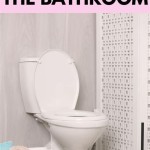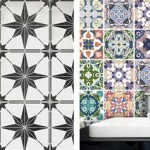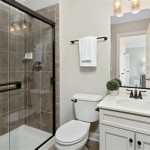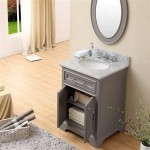Accent Wall Colors for Bathrooms: A Comprehensive Guide
Accent walls provide a strategic method for introducing depth, personality, and visual interest to a bathroom space. Rather than committing to a complete renovation or repainting of the entire room, an accent wall allows homeowners to experiment with color, texture, and style in a targeted and manageable way. Choosing the right color for a bathroom accent wall requires careful consideration of several factors, including the existing design scheme, the size and lighting of the room, and the desired mood.
This article provides a comprehensive guide to selecting and utilizing accent wall colors in bathrooms. It explores key considerations, popular color palettes, and practical tips for achieving a visually appealing and well-balanced design.
Understanding the Role of Color Psychology in Bathroom Design
Color psychology plays a significant role in how individuals perceive and experience a space. Different colors evoke distinct emotions and associations, influencing mood, relaxation, and energy levels. In a bathroom, a space often associated with relaxation and personal care, the chosen color palette can significantly impact the overall ambiance.
Cool colors, such as blues, greens, and purples, are generally considered calming and serene. They can create a sense of tranquility and spaciousness, making them suitable for smaller bathrooms or those intended for relaxation and unwinding. Warmer colors, such as reds, oranges, and yellows, tend to be more energizing and stimulating. They can add vibrancy and warmth to a space, but should be used judiciously in bathrooms to avoid overwhelming the senses. Neutral colors, such as whites, grays, and beiges, provide a versatile backdrop that can be easily complemented by other colors and textures. These colors offer a sense of cleanliness and sophistication, making them a popular choice for modern and minimalist bathroom designs. The successful use of a color for an accent wall depends heavily on the pre-existing colors in the bathroom.
When selecting an accent wall color, it is crucial to consider the psychological impact of the chosen hue and how it aligns with the intended purpose and atmosphere of the bathroom. An individual's preferences and personal experiences with color also play a role in determining the most suitable color palette for their bathroom.
Key Considerations for Choosing an Accent Wall Color
Several factors should be carefully considered when selecting an accent wall color for a bathroom. These considerations ensure that the chosen color complements the existing design elements and enhances the overall aesthetic appeal of the space.
Existing Color Scheme: The accent wall color should harmonize with the existing color scheme of the bathroom. This includes the colors of the walls, flooring, fixtures, and accessories. Consider whether the desired effect is to create a complementary contrast or a more subtle, monochromatic look. For example, if the bathroom features white walls and gray tile, a deep blue or teal accent wall can add a pop of color while maintaining a sense of sophistication. If the space is primarily neutral, a brighter color like coral or turquoise can inject energy and visual interest.
Room Size and Lighting: The size and lighting of the bathroom play a crucial role in determining the most appropriate accent wall color. In smaller bathrooms, lighter colors can help to create a sense of spaciousness and prevent the room from feeling cramped. Darker colors can be used sparingly in smaller spaces, but it is important to ensure that the room has adequate lighting to prevent it from feeling too dark or gloomy. Natural light dramatically affects the way colors appear, so observe the room at different times of day to assess how the light interacts with the existing colors. Artificial lighting should also be considered, as warm and cool light bulbs can alter the perceived hue of the accent wall color.
Desired Mood and Style: The accent wall color should reflect the desired mood and style of the bathroom. For a spa-like atmosphere, calming colors such as blues, greens, and grays are ideal. For a more modern and contemporary look, bold and vibrant colors such as oranges, yellows, and pinks can be used. The overall style of the bathroom, whether it is traditional, minimalist, or eclectic, should also influence the choice of accent wall color. A rustic bathroom might benefit from earthy tones like terracotta or sage green, while a glamorous bathroom could incorporate jewel tones like emerald green or sapphire blue.
Fixture and Hardware Finishes: Consider the finishes of the bathroom fixtures and hardware when choosing an accent wall color. Metallic finishes, such as chrome, brushed nickel, and brass, can influence the overall tone of the space. For example, a bathroom with chrome fixtures might benefit from a cool-toned accent wall color, while a bathroom with brass fixtures might be complemented by a warmer color palette. The style of the fixtures, whether they are modern and sleek or traditional and ornate, should also be taken into account.
By carefully considering these factors, homeowners can select an accent wall color that enhances the aesthetic appeal of their bathroom and creates the desired atmosphere.
Popular Accent Wall Color Palettes for Bathrooms
Several color palettes are particularly well-suited for creating visually appealing and harmonious accent walls in bathrooms. These palettes offer a range of options to suit different tastes, styles, and design preferences.
Blues and Greens: Blue and green are classic choices for bathroom accent walls, known for their calming and refreshing qualities. Light blues and greens can create a serene and spa-like atmosphere, while deeper shades can add a touch of sophistication and drama. These colors pair well with white, gray, and natural wood tones. Consider using different shades of blue or green for a monochromatic effect, or combine them with complementary colors like yellow or orange for a more vibrant look. Teal, a blend of blue and green, is a particularly popular choice for bathroom accent walls, offering a calming yet invigorating feel.
Grays and Neutrals: Gray and neutral colors provide a versatile and sophisticated backdrop for bathroom accent walls. These colors can be used to create a calming and understated look, or they can be paired with bolder colors for a more dynamic contrast. Light grays and beiges can create a sense of spaciousness, while darker grays and charcoals can add depth and drama. Consider using different textures, such as shiplap or textured paint, to add visual interest to a neutral accent wall.
Bold and Vibrant Colors: For those seeking a more dramatic and energizing effect, bold and vibrant colors such as oranges, yellows, and pinks can be used for bathroom accent walls. These colors can add a pop of personality and create a focal point in the room. However, it is important to use these colors judiciously, as they can be overwhelming if overused. Consider using a bold color on a smaller accent wall or pairing it with neutral colors to balance the overall look. Coral, a blend of pink and orange, is a popular choice for bathroom accent walls, offering a warm and inviting feel.
Jewel Tones: Jewel tones, such as emerald green, sapphire blue, and amethyst purple, can add a touch of luxury and sophistication to a bathroom accent wall. These colors are rich and saturated, creating a sense of opulence and drama. Jewel tones pair well with metallic accents, such as gold or brass, and can be used to create a glamorous and inviting space. Consider using a jewel tone on a larger accent wall to make a statement, or use it sparingly as an accent color in a smaller bathroom.
Earthy Tones: Earthy tones, such as terracotta, olive green, and rust, can create a warm and inviting atmosphere in a bathroom. These colors are reminiscent of nature and can evoke a sense of calm and tranquility. Earthy tones pair well with natural materials, such as wood and stone, and can be used to create a rustic or bohemian-inspired space. Consider using a textured paint or wallpaper to add visual interest to an earthy-toned accent wall.
When choosing an accent wall color palette, it is important to consider the existing design elements of the bathroom and the desired mood and style. Experimenting with different color combinations and textures can help to create a unique and personalized space.
Beyond general color schemes, successful accent walls can also be created by taking inspiration from patterns or textures. For instance, a bathroom with simple subway tile may benefit from an accent wall featuring a geometric patterned wallpaper using varying shades of the same primary color in the room. In contrast, a very busy master bathroom suite may require the opposite: a simple, matte paint in a shade that calms the noise of the existing design. In these situations, carefully considering the visual impact of the existing materials is key.
In addition to traditional paint or wallpaper options, the accent wall can be created using tile. Consider a vertical stripe of mosaic tile behind the vanity or tub for a dynamic visual effect. This adds texture and pattern while also proving durable and water-resistant. Reclaimed wood planks is another option for an accent wall, introducing warmth and a rustic charm to the bathroom. The choice of material can further amplify the impact of the accent color.
Lighting choices must also be considered. Spotlights or directional lighting can highlight the texture or color nuances of the accent wall, drawing attention to it and making it a focal point. Conversely, improper lighting can wash out the color or create unwanted shadows, diminishing its impact. It is also a good practice to test the selected color in the actual bathroom with different lighting conditions before committing to the final installation.
Ultimately, the goal of an accent wall is to create a balanced and harmonious design, not to overwhelm the space. It should complement the existing decor and enhance the overall aesthetic appeal of the bathroom. With careful planning and attention to detail, homeowners can achieve a visually stunning and inviting bathroom accent wall that reflects their personal style and preferences.

Bathroom Paint Colors Every Shade You Should Consider Décor Aid

12 Bathroom Paint Color Ideas You Haven T Thought Of Purewow

14 Bathroom Paint Colors Ideas And Inspiration Beamin Moore

14 Bathroom Paint Colors Ideas And Inspiration Beamin Moore

18 Bathroom Paint Colors Designers Love

How To Choose Bathroom Paint Colors Moving Com

Inspiring Bathroom Paint Colors Design Ideas For Your Next Renovation Ranney Blair Weidmann

How To Paint A Bathroom For Lasting Appeal Consumer Reports

18 Bathroom Paint Colors Designers Love

Breathtaking Bathroom Paint Colors 36 Brilliant Ideas







